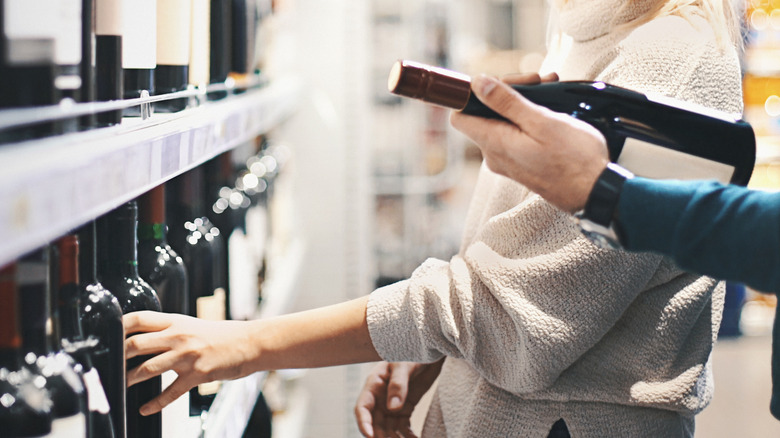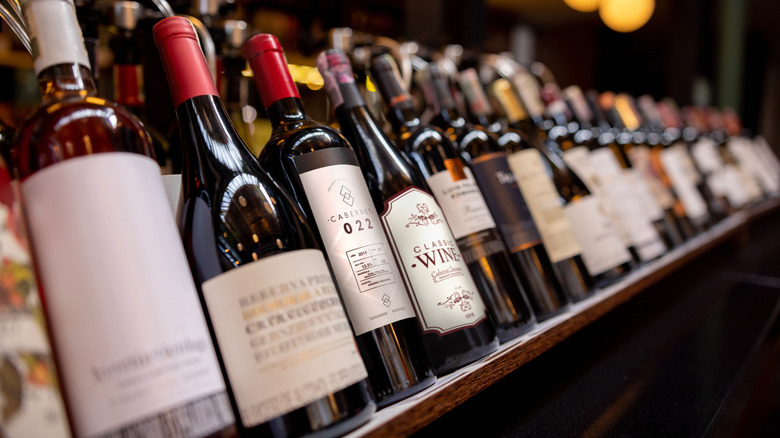Why A Vague Wine Bottle Label Is One Of The Biggest Red Flags
The function of a wine label is to tell consumers what they're getting from the product inside the bottle ... obviously. Although, in real-life market execution, this isn't always a given. If all your wine label says is "wine of California" or a similarly vague location, you're left in the dark as to what vino you're actually getting. Whether you're visiting a winery or trying to pin down a solid grocery store wine, pick up that bottle and give it a good inspection. A trustworthy wine label should be able to tell you about the producer, region, vintage (the year the grapes were harvested), varietals, and ABV.
Where the grapes were harvested is hugely important because it's all about terroir. Terroir (not to be confused with "minerality," which isn't a real thing) refers to how the natural landscape influences wine from a particular region. For instance, if the grapes were grown at a high elevation above sea level on a slanted hillside with moderate sunlight exposure in alkaline, iron-rich soil, in an area with a humid climate and cold nights, all of these factors determine the taste of the grapes. Knowing the specific climate styles of where the grapes in your wine come from can tell you a lot about the taste and body of the wine inside the bottle, whether they come from wine-growing superstar areas like Napa Valley or, increasingly, Wisconsin.
Know where your wine comes from before you uncork
Luckily for the modern consumer, wine lovers don't need to have all of the idiosyncratic characteristics of various world regions committed to memory; save that for the sommeliers, and feel free to whip out your smartphone in the wine shop. A quick internet search of "2019 Syrah Morocco" can make all the difference in connecting you with a wine you'll enjoy. Similarly, if the label says "estate-bottled," you can look up the details on that particular estate. Estate-bottled wines must contain only grapes grown in the estate's on-site vineyard and labeled with an official appellation if the wine is made from a blend of different varietals.
If the only thing you know about your wine is that it's a "merlot," it might be a budget-friendly bottle (which rocks), but if you're trying to guarantee a certain profile from your wine, vagueness in a label is not encouraging in that capacity. Even if a particular bottle of wine uses a hybrid blend of wine grapes, like a CMS blend (cab, merlot, syrah), the label should indicate what percentage of each grape varietal is in the finished wine.
To take it one step further, wines from some regions like Piedmont, Italy or Bordeaux, France might come with a D.O.C. label so fans can be sure they're getting the real deal. Protected quality guarantees a wine's provenance, authenticity, style, and quality, allowing consumers to make educated decisions about which bottles to purchase.

